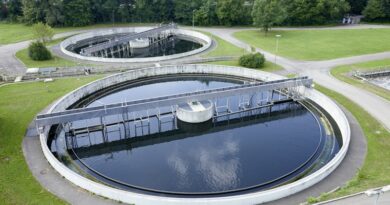MIT researchers find new method to remove heavy metals from contaminated water

A team of engineers at the US-based Massachusetts Institute of Technology (MIT) has designed a relatively low-cost and energy-efficient approach to treating water contaminated with heavy metals.
The developed the new approach in removing lead or other heavy-metal contaminants from water in a process – shock electrodialysis – that they say is far more energy-efficient than any other currently used system, though there are others under development that come close.
The new research could lead to systems being designed to treat lead-contaminated water supplies at the household level or even to treat contaminated water from chemical or industrial processes.
The new system is the latest in a series of applications based on initial findings six years ago by members of the same research team, initially developed for desalination of seawater or brackish water, and later adapted for removing radioactive compounds from the cooling water of nuclear power plants. The new version is the first such method that might be applicable for treating household water supplies, as well as industrial uses, said an official statement.
The findings are published in the journal Environmental Science and Technology – Water, in a paper by MIT graduate students Huanhuan Tian, Mohammad Alkhadra, and Kameron Conforti, and professor of chemical engineering Martin Bazant.
“It’s notoriously difficult to remove toxic heavy metal that’s persistent and present in a lot of different water sources,” Alkhadra says. “Obviously there are competing methods today that do this function, so it’s a matter of which method can do it at lower cost and more reliably.”
The biggest challenge in trying to remove lead is that it is generally present in such tiny concentrations, vastly exceeded by other elements or compounds. For example, sodium is typically present in drinking water at a concentration of tens of parts per million, whereas lead can be highly toxic at just a few parts per billion. Most existing processes, such as reverse osmosis or distillation, remove everything at once, Alkhadra explains. This not only takes much more energy than would be needed for a selective removal, but it’s counterproductive since small amounts of elements such as sodium and magnesium are actually essential for healthy drinking water.
The new approach uses a process called shock electrodialysis, in which an electric field is used to produce a shockwave inside an electrically charged porous material carrying the contaminated water. The shock wave propagates from one side to the other as the voltage increases, leaving behind a zone where the metal ions are depleted, and separating the feed stream into a brine and a fresh stream. The process results in a 95 per cent reduction of lead from the outgoing fresh stream.
In principle, “this makes the process much cheaper,” Bazant says, “because the electrical energy that you’re putting in to do the separation is really going after the high-value target, which is the lead. You’re not wasting a lot of energy removing the sodium.” Because the lead is present at such low concentration, “there’s not a lot of current involved in removing those ions, so this can be a very cost-effective way.”
The process still has its limitations, as it has only been demonstrated at small laboratory scale and at quite slow flow rates. Scaling up the process to make it practical for in-home use will require further research, and larger-scale industrial uses will take even longer. But it could be practical within a few years for some home-based systems, Bazant says.
For example, a home whose water supply is heavily contaminated with lead might have a system in the cellar that slowly processes a stream of water, filling a tank with lead-free water to be used for drinking and cooking, while leaving most of the water untreated for uses like toilet flushing or watering the lawn. Such uses might be appropriate as an interim measure for places like Flint, Michigan, where the water, mostly contaminated by the distribution pipes, will take many years to remediate through pipe replacements.
The process could also be adapted for some industrial uses such as cleaning water produced in mining or drilling operations, so that the treated water can be safely disposed of or reused. And in some cases, this could also provide a way of recovering metals that contaminate water but could actually be a valuable product if they were separated out; for example, some such minerals could be used to process semiconductors or pharmaceuticals or other high-tech products, the researchers said.



